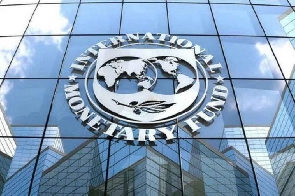The International Monetary Fund (IMF) has projected global growth for 2020 to be ?4.4 percent.
According to the IMF, this is a less severe contraction than forecast in the June 2020 World Economic Outlook (WEO) Update.
The revision, according to the IMF, reflects better-than anticipated second quarter GDP outturns, mostly in advanced economies, where activity began to improve sooner than expected after lockdowns were scaled back in May and June, as well as indicators of a stronger recovery in the third quarter.
Global growth is projected at 5.2 percent in 2021, a little lower than in the June 2020 WEO Update, reflecting the more moderate downturn projected for 2020 and consistent with expectations of persistent social distancing.
Following the contraction in 2020 and recovery in 2021, the level of global GDP in 2021 is expected to be a modest 0.6 percent above that of 2019.
The growth projections imply wide negative output gaps and elevated unemployment rates this year and in 2021 across both advanced and emerging market economies.
Medium-term outlook
After the rebound in 2021, global growth is expected to gradually slow to about 3.5 percent into the medium term. This implies only limited progress toward catching up to the path of economic activity for 2020–25 projected before the pandemic for both advanced and emerging market and developing economies.
It is also a severe setback to the projected improvement in average living standards across all country groups.
The pandemic will reverse the progress made since the 1990s in reducing global poverty and will increase inequality.
People who rely on daily wage labor and are outside the formal safety net faced sudden income losses when mobility restrictions were imposed. Among them, migrant workers who live far from home had even less recourse to traditional support networks.
Close to 90 million people could fall below the US$1.90 a day income threshold of extreme deprivation this year. In addition, school closures during the pandemic pose a significant new challenge that could set back human capital accumulation severely.
The subdued outlook for medium-term growth comes with a significant projected increase in the stock of sovereign debt. Downward revisions to potential output also imply a smaller tax base over the medium term than previously envisaged, compounding difficulties in servicing debt obligations.
The baseline projection assumes that social distancing will continue into 2021 but will subsequently fade over time as vaccine coverage expands and therapies improve.
Local transmission is assumed to be brought to low levels everywhere by the end of 2022. The medium-term projections also assume that economies will experience scarring from the depth of the recession and the need for structural change, entailing persistent effects on potential output.
These effects include adjustment costs and productivity impacts for surviving firms as they upgrade workplace safety, the amplification of the shock via firm bankruptcies, costly resource reallocation across sectors, and discouraged workers’ exit from the workforce.
The scarring is expected to compound forces that dragged productivity growth lower across many economies in the years leading up to the pandemic— relatively slow investment growth weighing on physical capital accumulation, more modest improvements in human capital, and slower efficiency gains in combining technology with factors of production.
Risks
The uncertainty surrounding the baseline projection is unusually large. The forecast rests on public health and economic factors that are inherently difficult to predict.
A first layer relates to the path of the pandemic, the needed public health response, and the associated domestic activity disruptions, most notably for contact-intensive sectors. Another source of uncertainty is the extent of global spillovers from soft demand, weaker tourism, and lower remittances.
Click to view details



Business News of Thursday, 12 November 2020
Source: 3news.com

















